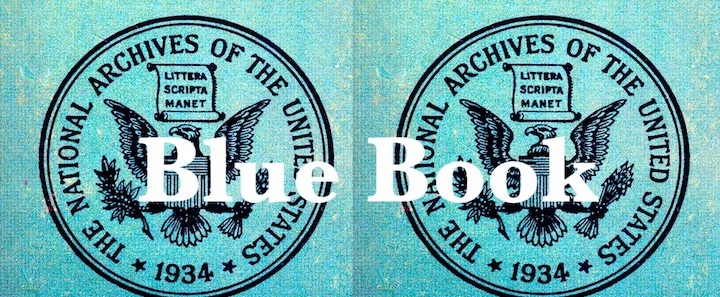
Project Blue Book case review: September-December 1966
This is the latest edition of the Project Blue Book case review covering September through December 1966. Like the previous evaluations, I tried to examine each case to see if the conclusion had merit. I added comments to help clarify the explanation or if I felt it was not correct or adequate. Items marked with red highlighting had photographs in the case file.
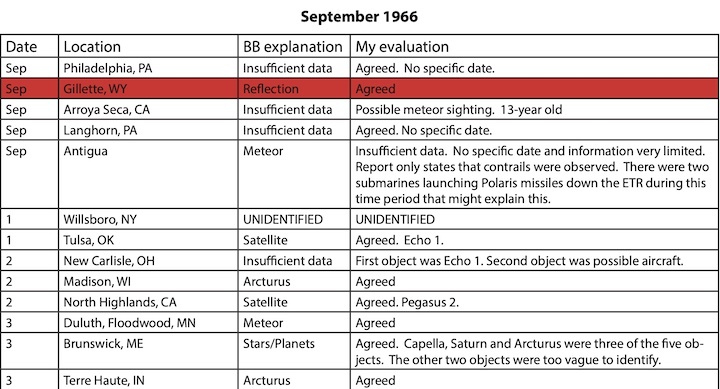
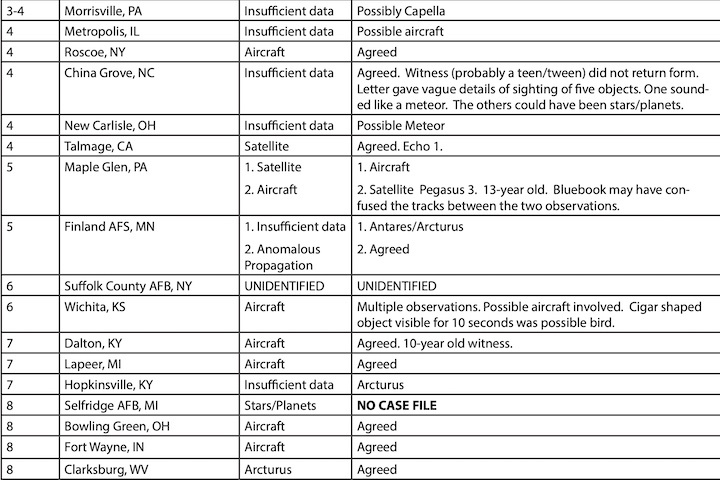
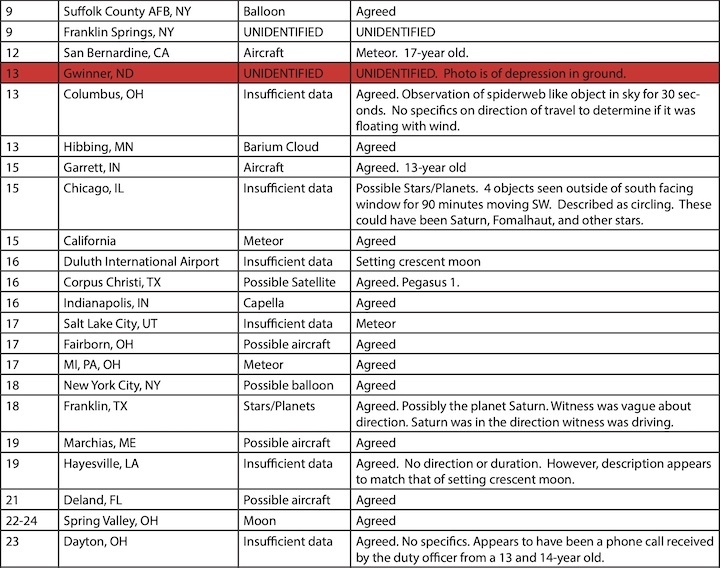

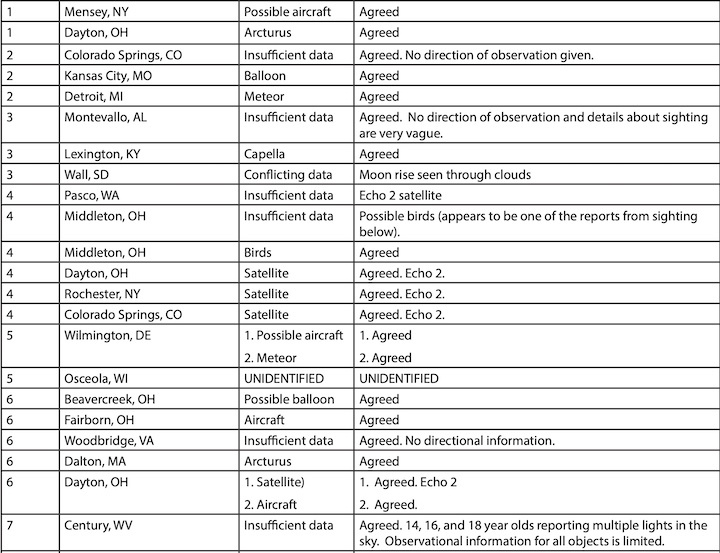
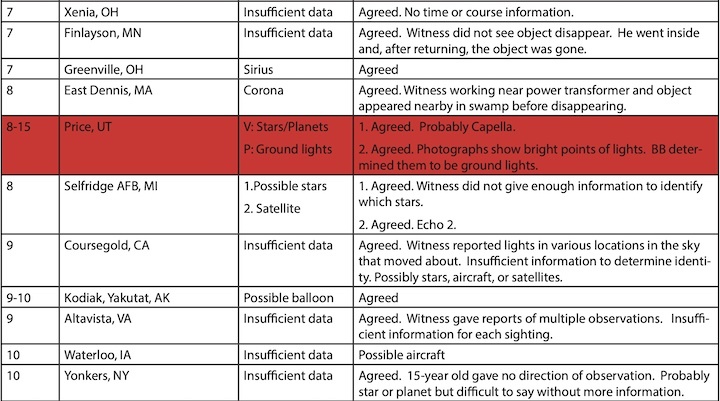
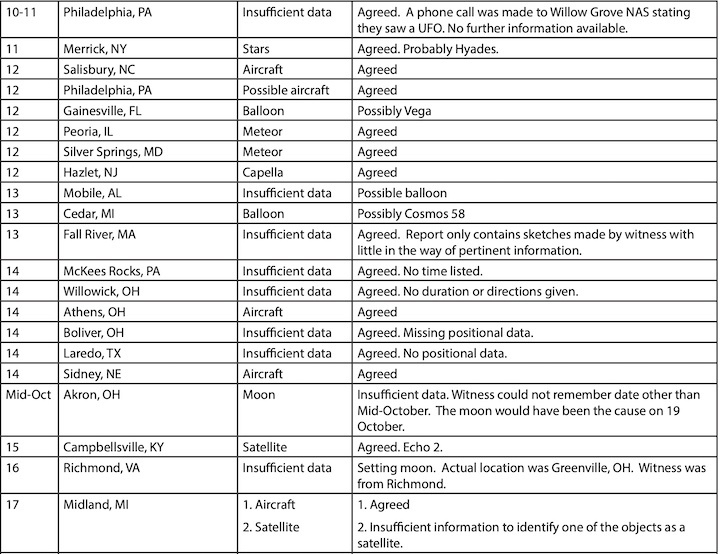
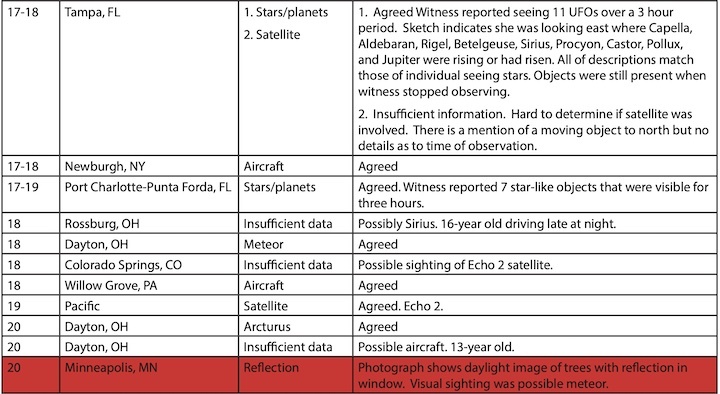
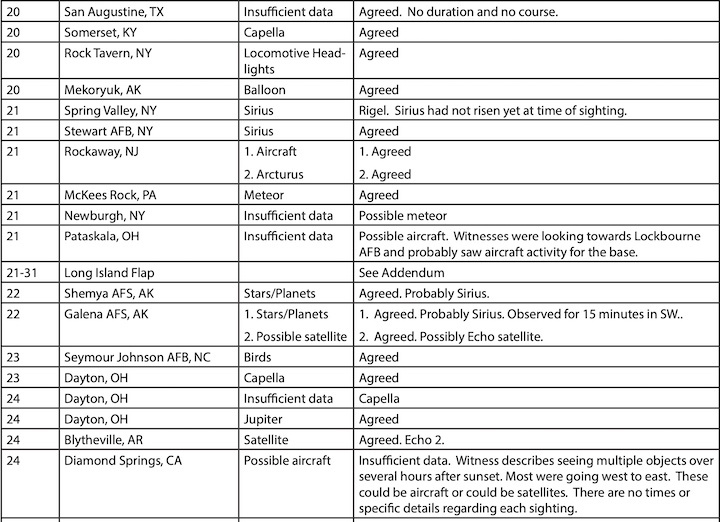
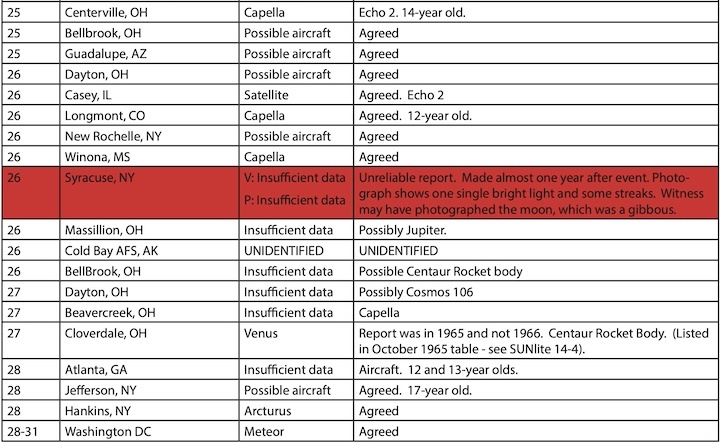
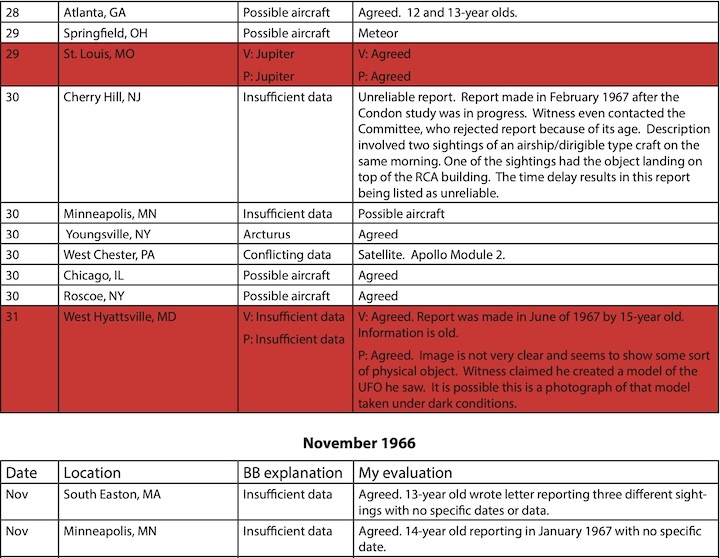
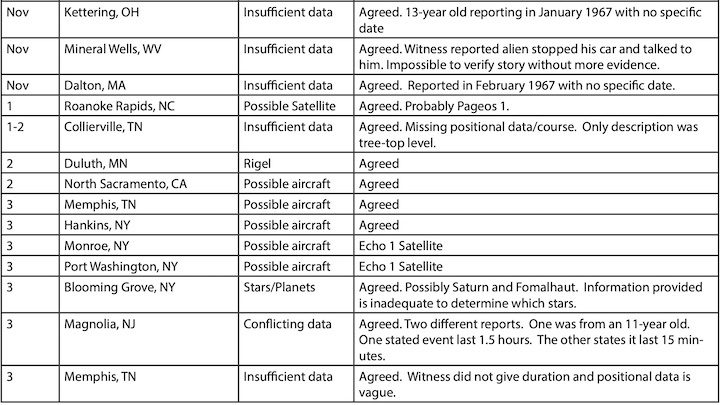
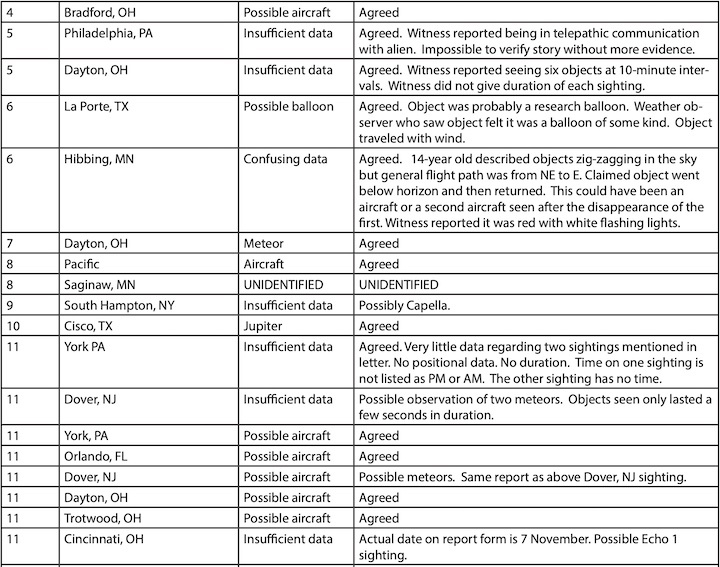
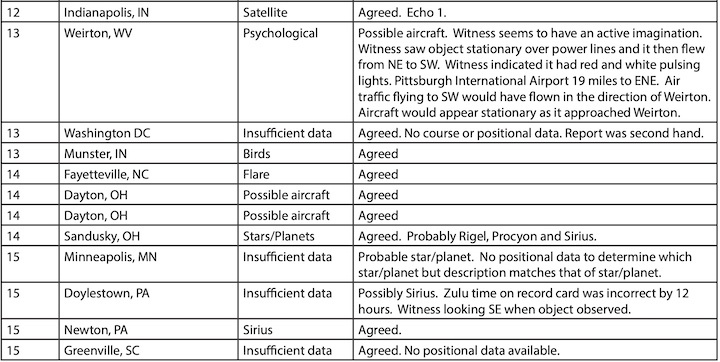
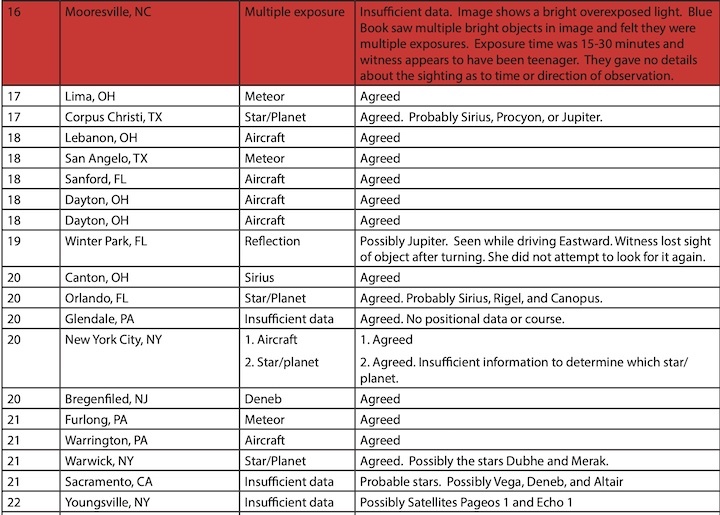
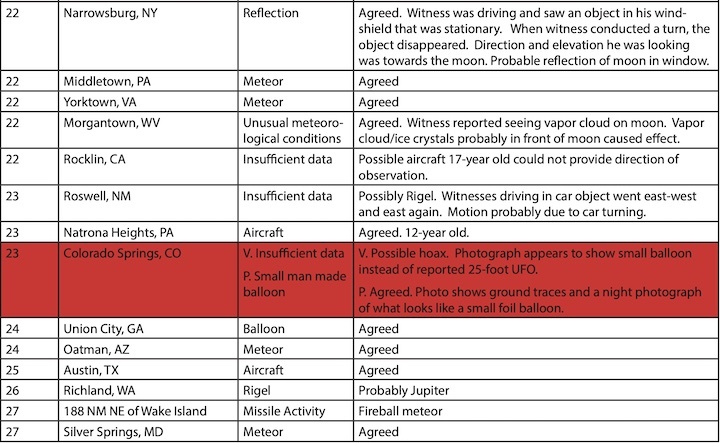
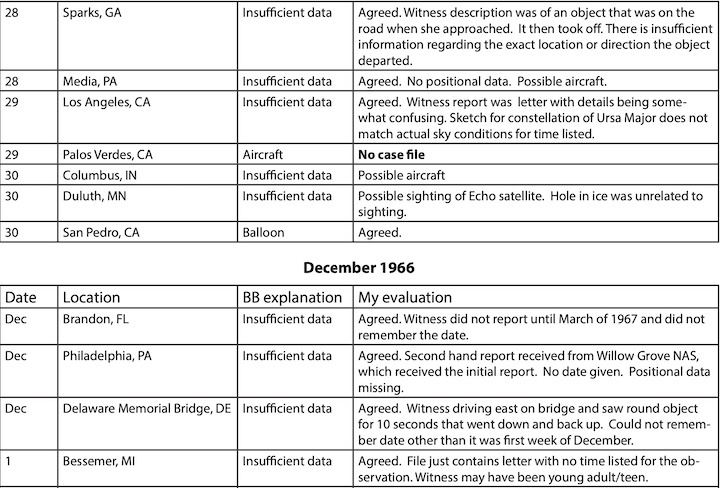
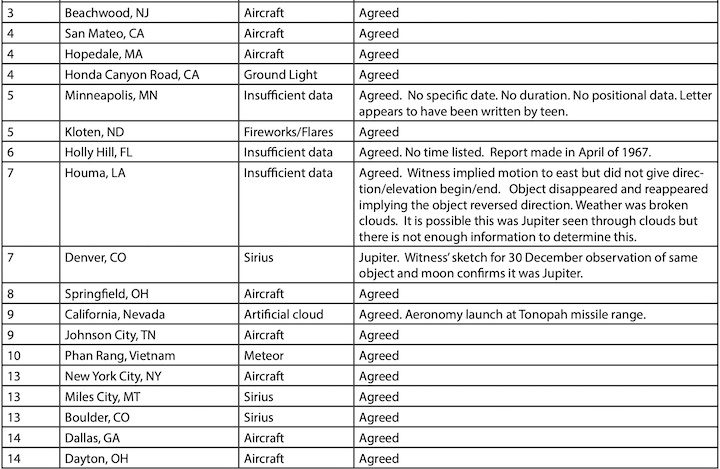
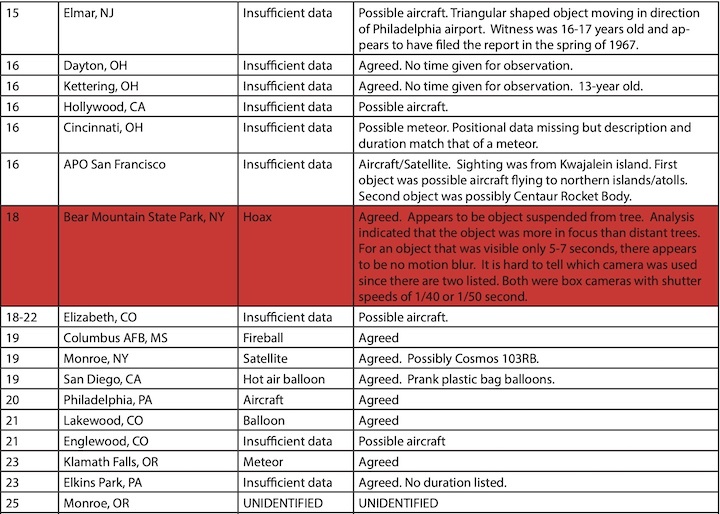

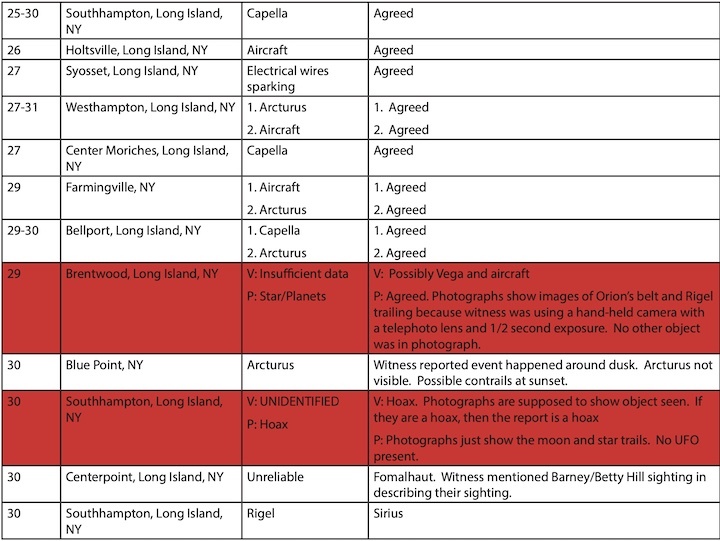
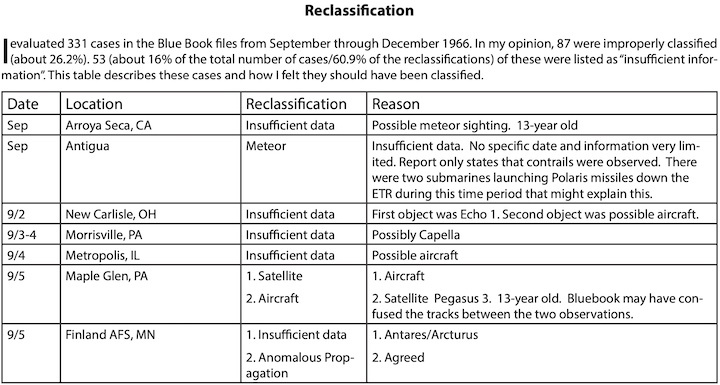
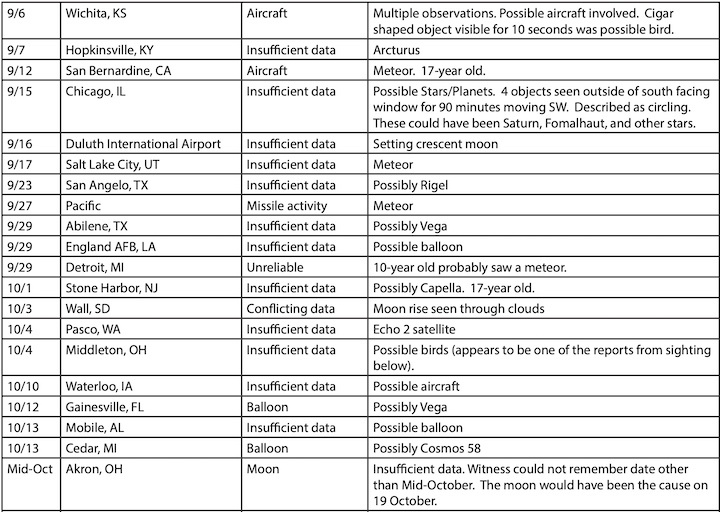
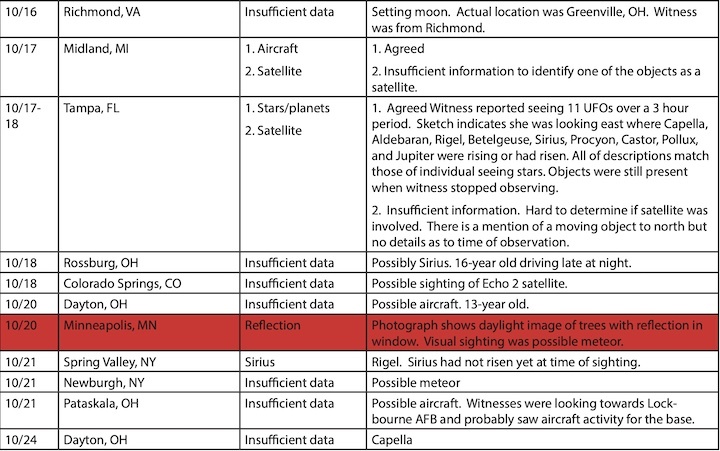
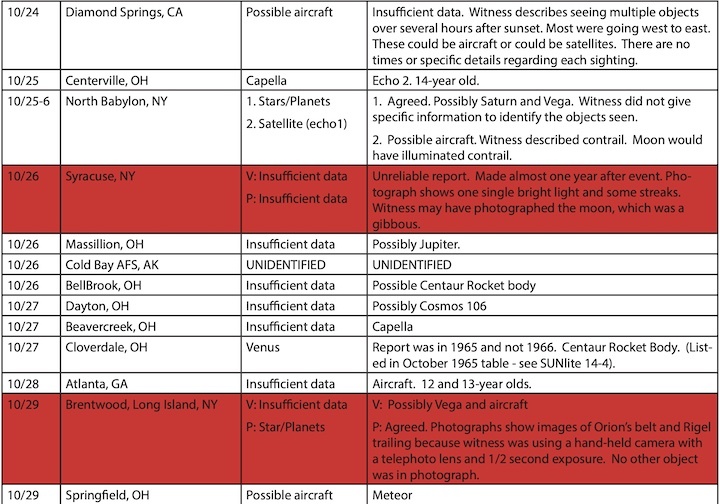
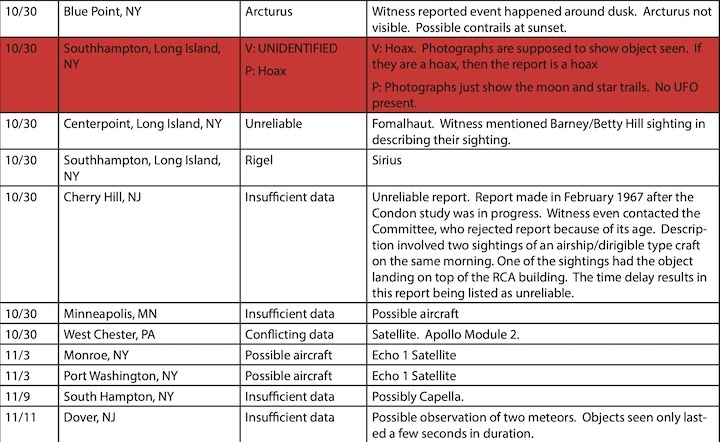
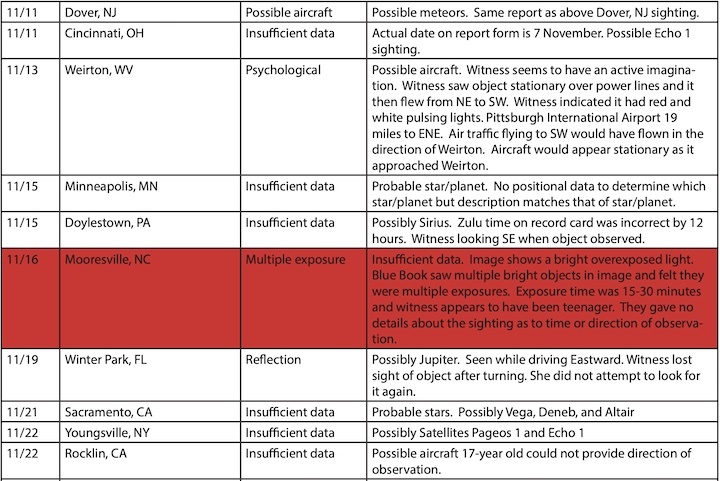
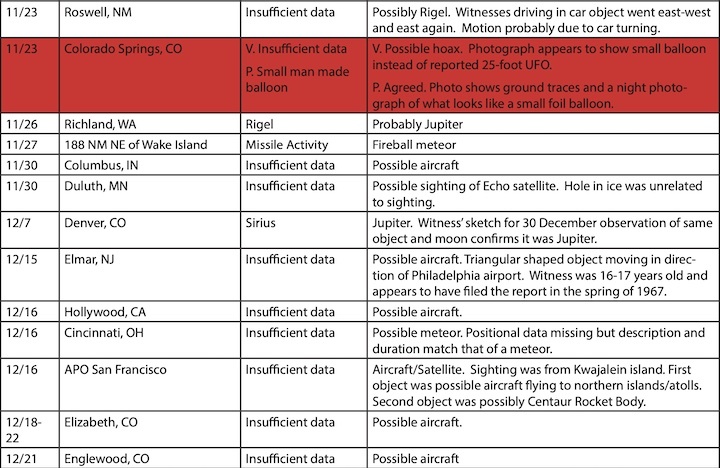

Summary
This period was populated with a lot of very poor reports. Quite a few of these were made by teens and tweens. However, it wasn’t just the teens that made poor reports. Military personnel seemed to be just as incapable of giving accurate or complete information. A lot of this had to do with the investigating officers not pursuing their investigations or pushing to acquire the infor- mation. Data like duration, directions, and angles of elevation were often missing or vague.
There was a “long Island flap” in mid to late October of 1966 that really was not much of a “flap”. Most of the sightings were of just stars and satellites. A few of the sightings, which were either hoaxes or exaggerations, tended to make headlines that magnified the other sighting’s importance.
I noticed that photographs of actual craft were more abundant than in previous reviews. Some of the photos looked like models being suspended from trees or power lines. Hynek wanted to label one photograph as unidentified (Bear Mountain State Park 12/18/66). He had a separate analyst look at the photograph and felt the object was more distant that what ATIC determined. Looking at the only copy I could find on-line (the images in the BB files are too bad for any examination), I tend to agree with ATIC. The object appears closer to the foreground trees. If a high quality scan was presented that could be analyzed maybe modern tech- niques could be used to approximate the distance or find any suspension threads.
Satellites were not as dominant a source of UFO reports as in previous reviews. Only 30 cases involved satellite observations (about 9%). This may have to do with the time of year or the orbits of the brighter satellites not passing over the United States during peak observing times.
Next issue, I will be examining the January - March 1967 time period. The first seven months of 1967 contained many sightings and, based on my experience with the sightings in this latest batch, I expect to see more of the same type of low quality reports.
Quelle: SUNlite 1/2023
